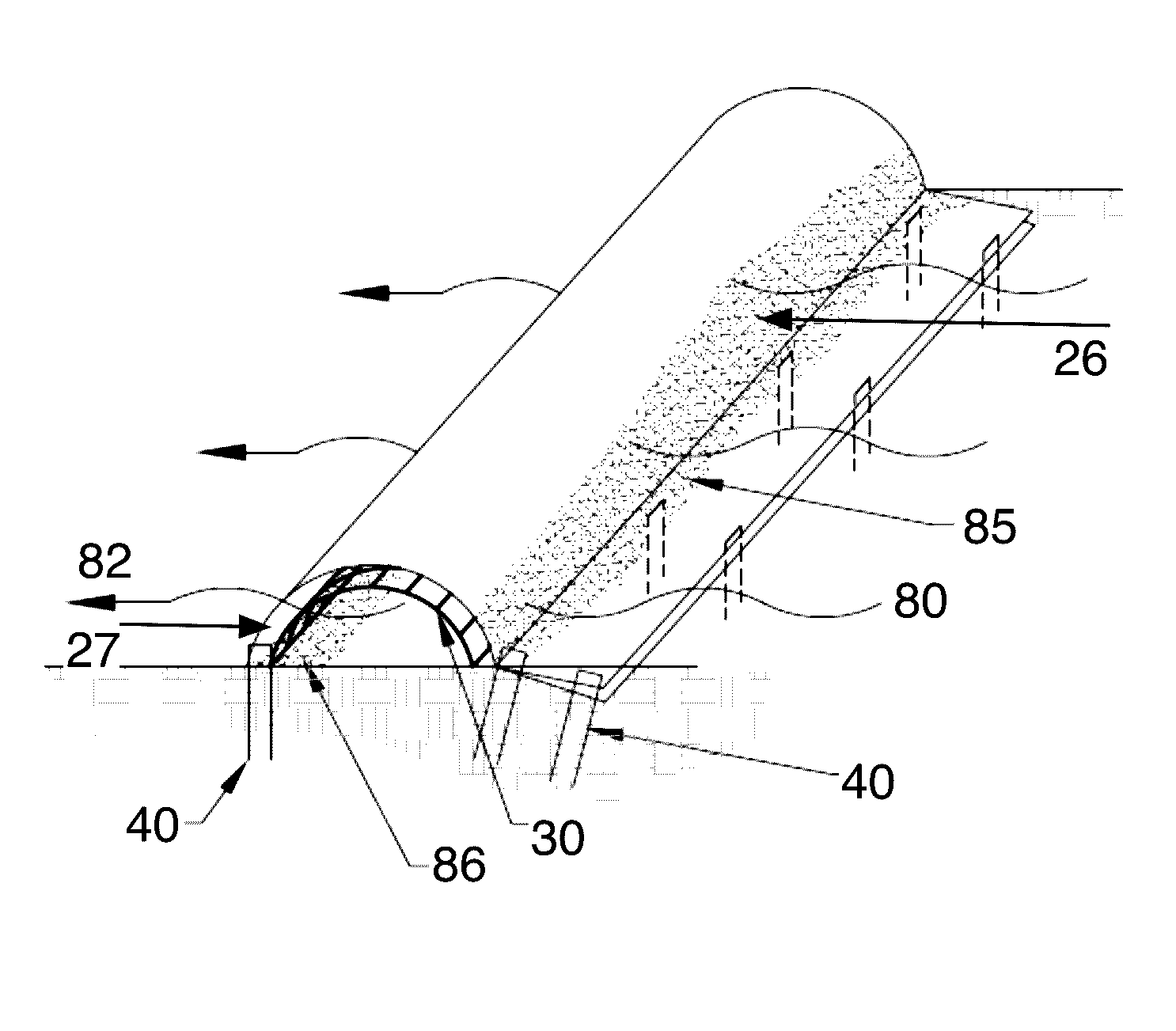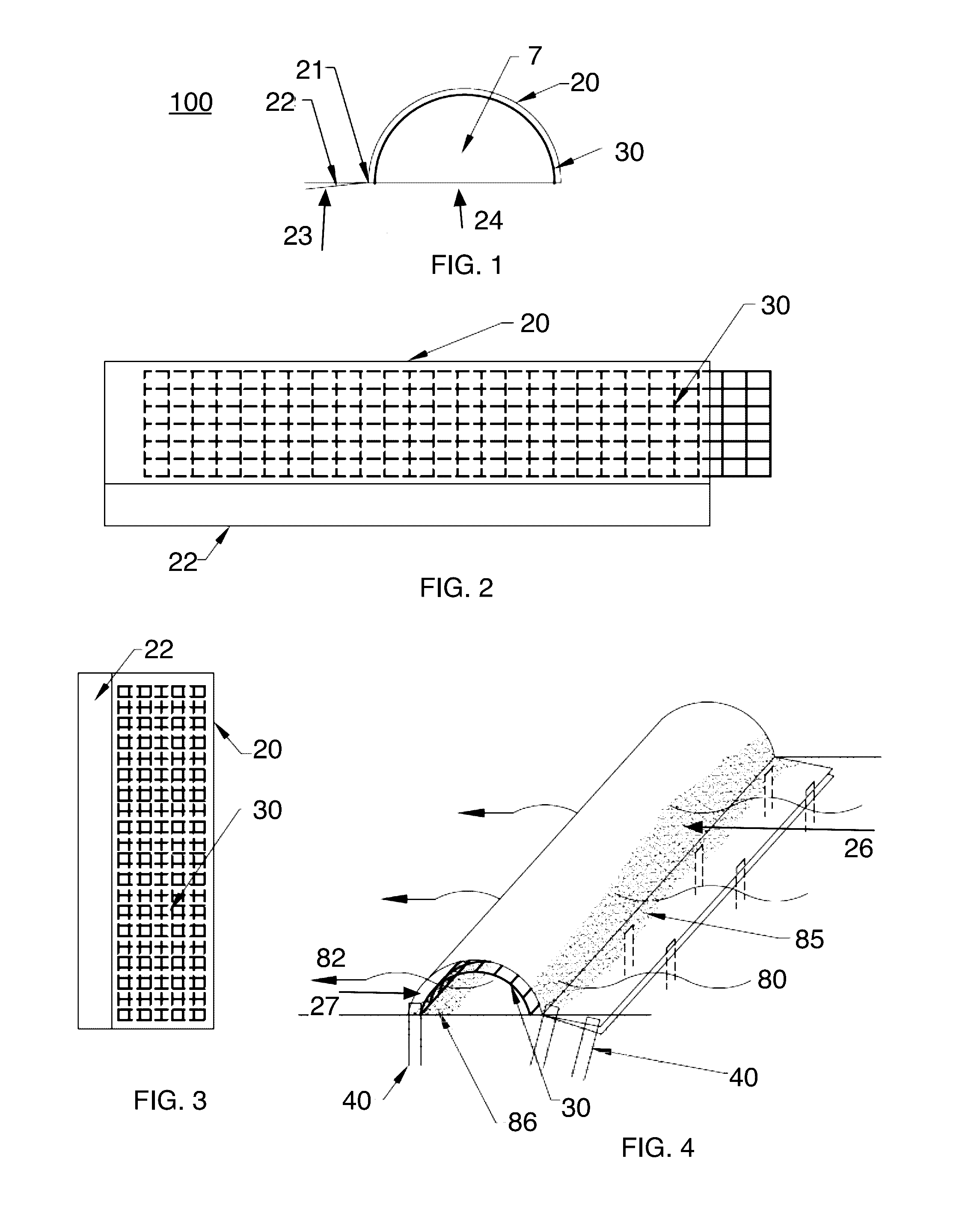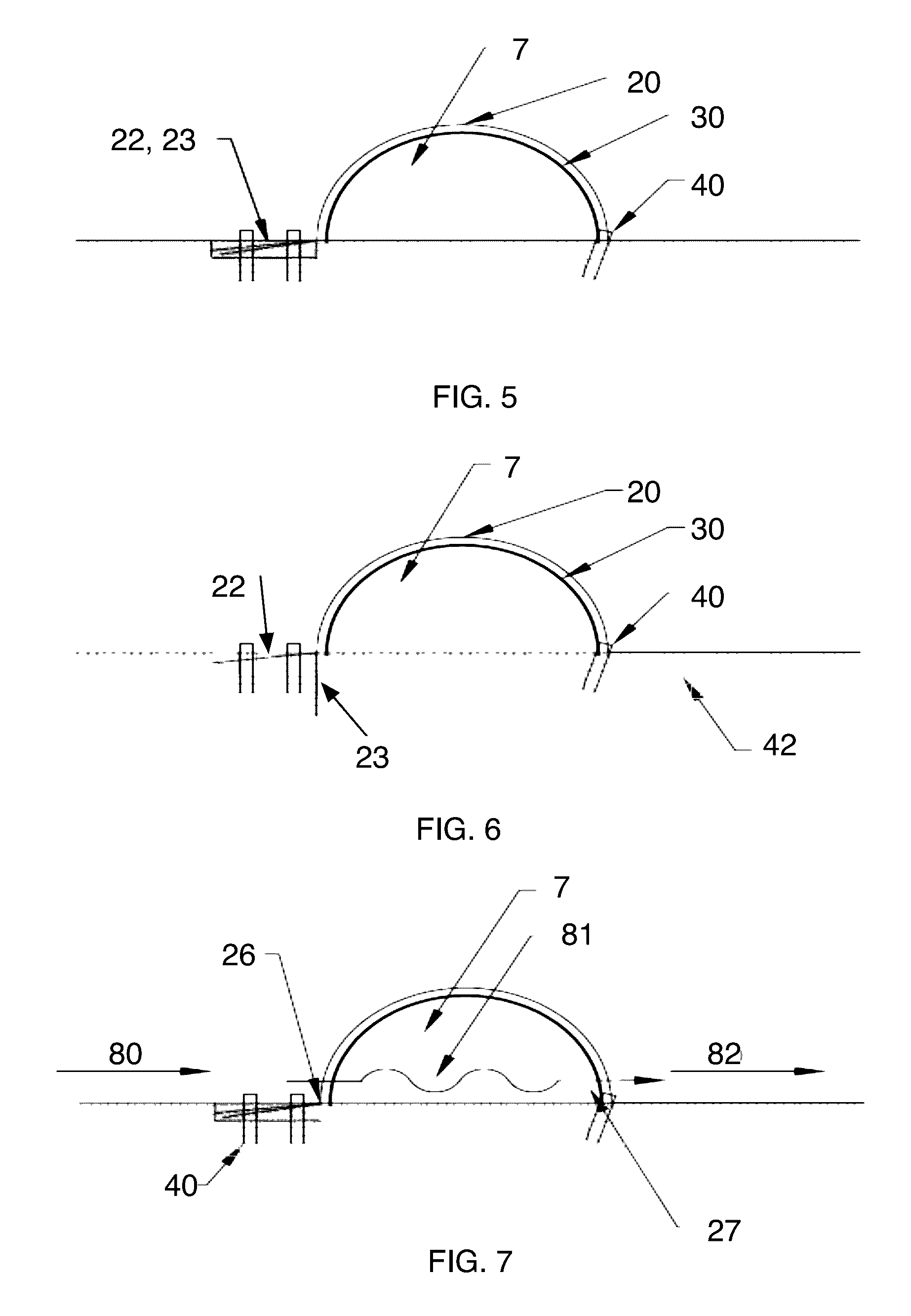Double filtration tension frame sediment control filter
a technology of sediment control and tension frame, which is applied in the direction of filtration separation, sewage draining, separation process, etc., can solve the problems of improper installation and maintenance, ineffective silt fences at controlling sediment loss from sites, and pollution of waterways and receiving bodies of water, so as to improve sediment removal
- Summary
- Abstract
- Description
- Claims
- Application Information
AI Technical Summary
Benefits of technology
Problems solved by technology
Method used
Image
Examples
Embodiment Construction
[0041]FIGS. 1-14 show a first embodiment of a double filtration sediment control filter formed by bending a flexible frame and inserting it into a geotextile filter sleeve.
[0042]FIG. 1 is a cross-section of a double filtration sediment control filter 100 showing a geotextile filter sleeve 20 formed by folding a sheet of geotextile and forming a seam 21 with two flap segments 22 and 23 extending beyond the seam 21. An inner flexible permeable tension frame 30 has been inserted into the filter sleeve 20. An air space 7 is created between the frame 30 and a bottom section 24 of the filter sleeve
[0043]In one example, the filtering geotextile is sewn, adhered, stapled, or otherwise attached to itself to form a tube or sleeve and a seam 21. Two extension portions 22 and 23 of the geotextile extend beyond the tube or sleeve seam to form a double geotextile leading flap or flange that extends horizontally upslope of the device. The flap is used to anchor the device to the ground. The flap i...
PUM
| Property | Measurement | Unit |
|---|---|---|
| width | aaaaa | aaaaa |
| perimeter | aaaaa | aaaaa |
| permeable | aaaaa | aaaaa |
Abstract
Description
Claims
Application Information
 Login to View More
Login to View More - R&D
- Intellectual Property
- Life Sciences
- Materials
- Tech Scout
- Unparalleled Data Quality
- Higher Quality Content
- 60% Fewer Hallucinations
Browse by: Latest US Patents, China's latest patents, Technical Efficacy Thesaurus, Application Domain, Technology Topic, Popular Technical Reports.
© 2025 PatSnap. All rights reserved.Legal|Privacy policy|Modern Slavery Act Transparency Statement|Sitemap|About US| Contact US: help@patsnap.com



